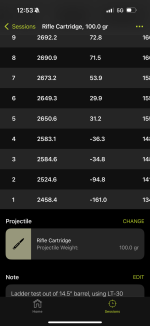Join the Hide community
Get access to live stream, lessons, the post exchange, and chat with other snipers.
Register
Download Gravity Ballistics
Get help to accurately calculate and scope your sniper rifle using real shooting data.

Install the app
How to install the app on iOS
Follow along with the video below to see how to install our site as a web app on your home screen.
Note: This feature may not be available in some browsers.
You are using an out of date browser. It may not display this or other websites correctly.
You should upgrade or use an alternative browser.
You should upgrade or use an alternative browser.
6.5 Grendel
- Thread starter padom
- Start date
Not sure how extensive your measuring tools are, but are absolutely essential for accurately determining shoulder as fired and correct setback. Much will depend on chamber in your barrel of concern. I have multiple chambers to match setback to, as well as case diameter just forward of base. Some chambers will handle .443-.444 base, a Proof and a Bartlein don’t play above .4412.
To your question about kiss/jamb, is going to depend on bullet selection and ogive location. My Proof loads a 120 Scenar at 2.225 OAL, which is about .025 off lands. Same bullet in a cut rifled Satern can be loaded to mag length, and is still .025-.030 off lands. Measurements matter.
Back on the fire forming question, my Proof fired dimension is 1.1895, I size to 1.188, using Hornady .375 chamber setback gauge. Couple of pics of unfired Lapua brass exhibits my bitch about unnecessarily short shoulders, necessitating burning a 100 components before you have usable brass. WTF, Lapua. Love your brass and bullets, but WTF?
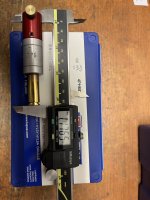
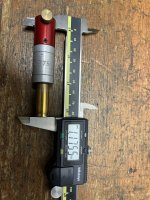
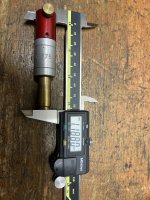
To your question about kiss/jamb, is going to depend on bullet selection and ogive location. My Proof loads a 120 Scenar at 2.225 OAL, which is about .025 off lands. Same bullet in a cut rifled Satern can be loaded to mag length, and is still .025-.030 off lands. Measurements matter.
Back on the fire forming question, my Proof fired dimension is 1.1895, I size to 1.188, using Hornady .375 chamber setback gauge. Couple of pics of unfired Lapua brass exhibits my bitch about unnecessarily short shoulders, necessitating burning a 100 components before you have usable brass. WTF, Lapua. Love your brass and bullets, but WTF?



I'm using the hornady .350 setback Guage but I suppose this won't matter as it's only a tool to give us a reference point for measurement.
I just checked again, my fired case was right at 1.2155 and a new starline was right at 1.208. It seems as though there is some variation either in the new brass or my fired cases. Previously I had measured a difference of 5 and a half thousands, now it's 7 and a half.
Now I need to go spot check more cases to see if I can get a more definitive measurement.



I'm shooting this out of a bolt rifle and able to load long and able to jam. I don't have detachable magazine. I have an internal mag with hinged Floorplate that would allow for it.
Going over my notes, my cbto for kissing lands is right at 1.753. With the bolt stripped, I can load a bullet at 1.752 cbto and it'll fall freely. It won't at 1.753.
I just checked again, my fired case was right at 1.2155 and a new starline was right at 1.208. It seems as though there is some variation either in the new brass or my fired cases. Previously I had measured a difference of 5 and a half thousands, now it's 7 and a half.
Now I need to go spot check more cases to see if I can get a more definitive measurement.
I'm shooting this out of a bolt rifle and able to load long and able to jam. I don't have detachable magazine. I have an internal mag with hinged Floorplate that would allow for it.
Going over my notes, my cbto for kissing lands is right at 1.753. With the bolt stripped, I can load a bullet at 1.752 cbto and it'll fall freely. It won't at 1.753.
Midsouth has the HORNADY 123 BTHP for .32 per round. They actually shoot well. Good luck on anything less than .20 per round.Anybody have a lead on decent bullets for cheap, preferably under 20 cents?
I'm trying to fireform since I have virgin brass and want to do load development on 1x fired
Midsouth has the HORNADY 123 BTHP for .32 per round. They actually shoot well. Good luck on anything less than .20 per round.
Thank you. Actually I found a few options on midway at the 20 cent mark and around that price that aren't hornady. We'll see how it goes.
It’s always a good idea to be on notification for Nosler/Shooter’s Pro Shop, Midway, Midsouth, and you can search components with AmmoSeek as well. I usually buy in bulk when there are discounts.
Hornady is generally the brand to beat when it comes to quality/affordability.
Hornady is generally the brand to beat when it comes to quality/affordability.
LRRP
Would sure like to hear your comments as to why Lapua, whose Grendel brass, once formed properly, is excellent, but requires at least .013 shoulder growth to fit most chambers, even on the min spec side. They’re pre-annealed, but require some careful attention in the fire forming process, and burning 100 rounds of components and barrel life to take correct chamber dimensions.
Seems an opportunity for corrective action at Lapua to satisfy the growing 22/6 ARC demand that’s being generated, as well as making for a more efficient reloading process for Grendel, as well.
You’ve done this longer than most all of us, and your input is always thorough and much appreciated.
Would sure like to hear your comments as to why Lapua, whose Grendel brass, once formed properly, is excellent, but requires at least .013 shoulder growth to fit most chambers, even on the min spec side. They’re pre-annealed, but require some careful attention in the fire forming process, and burning 100 rounds of components and barrel life to take correct chamber dimensions.
Seems an opportunity for corrective action at Lapua to satisfy the growing 22/6 ARC demand that’s being generated, as well as making for a more efficient reloading process for Grendel, as well.
You’ve done this longer than most all of us, and your input is always thorough and much appreciated.
Finally bought a box of the 100 eld vt’s the other day. Loaded up just a few to try and shot them this morning. Here is what I saw:
Rifle: Ruger American Predator in a Trybe Chassis with a cheapy Arken SH4 6-24 and stock trigger.
Weather/Elevation: 76-80 degrees with no wind and 5200’ ASL
Loads: all were Lapua brass, 7-1/2 primer, 8208XBR and 1.8 BTO, which is right at .020 off of jam.
28 grains - avg. 2666.6 FPS 12.3 SD 33 ES
28.5 grains - avg. 2726.5 FPS 5.2 SD 14.2 ES
28.8 grains - avg. 2748.9 FPS 5.0 SD 14.5 ES
29.1 grains - avg. 2785.4 FPS 16.3 SD 43.7 ES
29.4 grains - avg. 2825.7 FPS 9.4 SD 25.4 ES
28 and 29.4 shot the best at just about 1/2” on both. But, those SD’s are not my favorite. Gonna run AR Comp next probably. I would continue to go up above 29.4, but I don’t know that I want to push too hard with XBR as it will get outta hand pretty quick at the upper limits. But there was no cratering and no case head marks at 29.4.
Rifle: Ruger American Predator in a Trybe Chassis with a cheapy Arken SH4 6-24 and stock trigger.
Weather/Elevation: 76-80 degrees with no wind and 5200’ ASL
Loads: all were Lapua brass, 7-1/2 primer, 8208XBR and 1.8 BTO, which is right at .020 off of jam.
28 grains - avg. 2666.6 FPS 12.3 SD 33 ES
28.5 grains - avg. 2726.5 FPS 5.2 SD 14.2 ES
28.8 grains - avg. 2748.9 FPS 5.0 SD 14.5 ES
29.1 grains - avg. 2785.4 FPS 16.3 SD 43.7 ES
29.4 grains - avg. 2825.7 FPS 9.4 SD 25.4 ES
28 and 29.4 shot the best at just about 1/2” on both. But, those SD’s are not my favorite. Gonna run AR Comp next probably. I would continue to go up above 29.4, but I don’t know that I want to push too hard with XBR as it will get outta hand pretty quick at the upper limits. But there was no cratering and no case head marks at 29.4.
And these today at Midway. Very good bullet, in my experience.It’s always a good idea to be on notification for Nosler/Shooter’s Pro Shop, Midway, Midsouth, and you can search components with AmmoSeek as well. I usually buy in bulk when there are discounts.
Hornady is generally the brand to beat when it comes to quality/affordability.
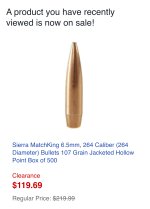
Plus free shipping today. I have 2k on the way.And these today at Midway. Very good bullet, in my experience.
View attachment 8491387
Yeah those are the ones I posted earlier along with a couple others I found discounted.And these today at Midway. Very good bullet, in my experience.
View attachment 8491387
I’ve just loaded the Lapua brass and shot it repeatedly since 2009 and not worried about it. It seems to last forever. Some guys shot the head stamps out of Lapua brass after over 20 firings. I have noticed the significant shoulder movement from unfired to fired with factory ammo and virgin brass, but once-fired, don’t really care anymore.LRRP
Would sure like to hear your comments as to why Lapua, whose Grendel brass, once formed properly, is excellent, but requires at least .013 shoulder growth to fit most chambers, even on the min spec side. They’re pre-annealed, but require some careful attention in the fire forming process, and burning 100 rounds of components and barrel life to take correct chamber dimensions.
Seems an opportunity for corrective action at Lapua to satisfy the growing 22/6 ARC demand that’s being generated, as well as making for a more efficient reloading process for Grendel, as well.
You’ve done this longer than most all of us, and your input is always thorough and much appreciated.
The only problem I had with Lapua brass was when I first started loading it and I was still using Imperial sizing wax. I put too much lube on a few necks and had some hydro-formed pockets and one split neck.
Once I went to Hornady One Shot spray lube, I’ve never had an issue again, though it was purely operator error with the Imperial wax. One-Shot is just easier for me to case-lube and get uniform coating on and inside the necks of all my brass.
My 31.2gr CFE223 under 123gr Hornady load spits out new-looking Lapua brass from unsuppressed Grendels. I load the same in Hornady brass too.
One thing I can say is that I have never had a failure to feed, fire, and extract with any of my Grendel hand loads. Once your sizing die is dialed-in using the Hornady (used to be Stoney Point) headspace comparator, you’re pretty much set. I check my primer seating depths and double-weigh charges, double-seat projectiles for concentricity.
Once I started loading Grendel, messing with hand-loading .223 just seemed like a waste of SRPs and my time after seeing the difference on-target for what I’m doing.
I’ve just loaded the Lapua brass and shot it repeatedly since 2009 and not worried about it. It seems to last forever. Some guys shot the head stamps out of Lapua brass after over 20 firings. I have noticed the significant shoulder movement from unfired to fired with factory ammo and virgin brass, but once-fired, don’t really care anymore.
The only problem I had with Lapua brass was when I first started loading it and I was still using Imperial sizing wax. I put too much lube on a few necks and had some hydro-formed pockets and one split neck.
Once I went to Hornady One Shot spray lube, I’ve never had an issue again, though it was purely operator error with the Imperial wax. One-Shot is just easier for me to case-lube and get uniform coating on and inside the necks of all my brass.
My 31.2gr CFE223 under 123gr Hornady load spits out new-looking Lapua brass from unsuppressed Grendels. I load the same in Hornady brass too.
One thing I can say is that I have never had a failure to feed, fire, and extract with any of my Grendel hand loads. Once your sizing die is dialed-in using the Hornady (used to be Stoney Point) headspace comparator, you’re pretty much set. I check my primer seating depths and double-weigh charges, double-seat projectiles for concentricity.
Once I started loading Grendel, messing with hand-loading .223 just seemed like a waste of SRPs and my time after seeing the difference on-target for what I’m doing.
I got 2 questions for you...
I'm a fairly new reloader.
How are you checking primer seating depth and what do you mean by "double seat projectiles for comcentricity"?
Appreciate your comments, and largely agree that after once fired initially, Lapua lasts through many firings-I do anneal all my brass after every firing, and is very uniform in case weight through multiple lots. My gripe is having to grow shoulders .013-.016, depending on chamber, from new. And have seen some of the dreaded ‘shoulder’ or belt above case rims, not knowing if associated with initial firing and excessive headspace or early unlocking.
All said, would just rather see base to shoulder about another .010-.011 longer on unfired brass, and don’t understand why Lapua can’t improve on same in their manufacturing process.
All said, would just rather see base to shoulder about another .010-.011 longer on unfired brass, and don’t understand why Lapua can’t improve on same in their manufacturing process.
Last edited:
if you dont have the right primer seater that puts them in to a certain depth, why be worried ?I got 2 questions for you...
I'm a fairly new reloader.
How are you checking primer seating depth and what do you mean by "double seat projectiles for comcentricity"?
Primers should not be flush with the case head. They need to be seated at least .003” deeper. I use my calipers as a depth gauge with the tail as a QC process when priming. I was raised using a hand tool for priming, but I personally prefer using the press to prime (about one of the only things a Lee press is good forI got 2 questions for you...
I'm a fairly new reloader.
How are you checking primer seating depth and what do you mean by "double seat projectiles for comcentricity"?

When double-seating to tighten up runout, after the cases are charged and it’s time to seat bullets, I do an initial seating without going all the way, then rotate the cartridge in the shell holder, and then final-seat. It makes it so the bullet isn’t cock-eyed in the neck, and helps with precision. There have been large sample size comparisons done that showed improvement in grouping.
I have had excellent results from lightweight Grendel AR-15s at 1000yds with these loads, even with ball powder (CFE223). If I used 8208XBR or AR Comp, I’m sure I could shrink my groups, but those stick powders aren’t as available as ball powders due to how much harder it is to make them and crank out consistent burn-rate lots. It’s the whole reason the Army had Winchester load WC846 ball powder in 1963, instead of the IMR4475 stick powder the AR-15 had been engineered around.
if you dont have the right primer seater that puts them in to a certain depth, why be worried ?
Lol, are you assuming I don't have the right primer seater? Gtfo if you have nothing to add...
Primers should not be flush with the case head. They need to be seated at least .003” deeper. I use my calipers as a depth gauge with the tail as a QC process when priming. I was raised using a hand tool for priming, but I personally prefer using the press to prime (about one of the only things a Lee press is good for).

When double-seating to tighten up runout, after the cases are charged and it’s time to seat bullets, I do an initial seating without going all the way, then rotate the cartridge in the shell holder, and then final-seat. It makes it so the bullet isn’t cock-eyed in the neck, and helps with precision. There have been large sample size comparisons done that showed improvement in grouping.
I have had excellent results from lightweight Grendel AR-15s at 1000yds with these loads, even with ball powder (CFE223). If I used 8208XBR or AR Comp, I’m sure I could shrink my groups, but those stick powders aren’t as available as ball powders due to how much harder it is to make them and crank out consistent burn-rate lots. It’s the whole reason the Army had Winchester load WC846 ball powder in 1963, instead of the IMR4475 stick powder the AR-15 had been engineered around.
That double seat is a good tip. I had never heard of it. I already sit primers below flush. I just wasn't sure how people were measuring the depth. Good to know the back of the micrometer is what others use.
Thanks...
most dont have . why would i assume you do ?Lol, are you assuming I don't have the right primer seater? Gtfo if you have nothing to add...
Just got back from the deer lease testing some loads. Whoever said you can't get enough varget in a grendel case and achieve decent MVs is wrong. Well partially wrong at least. I'm shooting on a bolt rifle platform so I'm sure it won't work in an AR.
I'll drop this here.
Top row is my 6.5 CM so that does not pertain to this. The middle section and lower section though, are from my 2 grendel rifles.
Groups were not really really good. I'm sure they could benefit from some tweaking, maybe using a different projectile or tuning with setting depth.
The very bottom row, which is for the 18" grendel, has 3 round groups for the first 3 charge weights and 4 round groups for the remaining. Everything else is 5 round groups.

I'll drop this here.
Top row is my 6.5 CM so that does not pertain to this. The middle section and lower section though, are from my 2 grendel rifles.
Groups were not really really good. I'm sure they could benefit from some tweaking, maybe using a different projectile or tuning with setting depth.
The very bottom row, which is for the 18" grendel, has 3 round groups for the first 3 charge weights and 4 round groups for the remaining. Everything else is 5 round groups.
My Proof is a 20" and I use a Rexus bolt, but 31 - 31.3 grains of LeverRevolution, 450, Lapua/AA brass, and a 120 SMK, 123 SMK, or a 123 grain SST shoot very well. That load works for me out of 3 different barrels I've used it in. Not a light load.I have a new 18" Proof Research Grendel Barrel en route I will run with a JP bolt. Anyone with this barrel care to share a load that has worked for them? Thanks in advance!
The Sierra 120 grain GameChanger is still being tested but I backed it down to 31 grains maximum going by the velocity (the brass did not show anything but the velocity was what I usually see with the other bullets mentioned so I called it at 31 grains).
The Sierra 105 grain tipped Varminteer (I think it is the Varminteer) is shooting nice groups with 8208.
I noticed a lot of headspace movement with Lapua brass as well, but I think I’ve also seen it with most factory ammo too. They will minimum-size factory brass to ensure it feeds in as many chambers as possible, especially gas guns.LRRP
Would sure like to hear your comments as to why Lapua, whose Grendel brass, once formed properly, is excellent, but requires at least .013 shoulder growth to fit most chambers, even on the min spec side. They’re pre-annealed, but require some careful attention in the fire forming process, and burning 100 rounds of components and barrel life to take correct chamber dimensions.
Seems an opportunity for corrective action at Lapua to satisfy the growing 22/6 ARC demand that’s being generated, as well as making for a more efficient reloading process for Grendel, as well.
You’ve done this longer than most all of us, and your input is always thorough and much appreciated.
I started out with old school Lapua brass in the thin cardboard boxes given to me in Finland back in the 2000s. I had brass before I ever had a Grendel barrel/bolt or carbine built-up.
Case lengths grow on first firing but then don’t really grow anymore, at least Lapua. I’ve typically seen 1.505” - 1.510” cases grow to 1.522”-1.528” off the top of my head. SAAMI max case length is 1.530”. Due to the lower pressures, Grendel brass just seems to stay where it’s at after initial fire-forming.
I pretty much keep my reloading to Lapua and Hornady brass. I have piles of PPU LRP and SRP brass, some Federal, and a few Nosler.
PPU brass is really soft so it makes for good field and match sacrificial brass that you don’t care if you lose it. You won’t get many loads out of it anyway.
Federal is a bit better but doesn’t seem to last long in gas guns, but does great in bolt guns even when pushed.
I have not had any experience with the Starline brass yet, but most feedback I have seen on it is really good.
There are guys who have shot the headstamps out of their Lapua brass after 20+ loadings, which means Lapua is the most economical brass that I’m aware of. Hornady brass usually loses primer pockets at around 7-12 loads, depending on how it’s pushed.
CFE223 is comparably such a lower pressure affair, so my brass seems to come out looking new from unsuppressed rifles and carbines. I’m maybe 47-48ksi under a 123gr A-MAX at higher mv than factory ammo. Such a great combo for brass longevity and top performance, no need to chase pressure.
Last edited:
Can you list your details with Varget? It’s hard to see what barrel length and speeds from that photo.Just got back from the deer lease testing some loads. Whoever said you can't get enough varget in a grendel case and achieve decent MVs is wrong. Well partially wrong at least. I'm shooting on a bolt rifle platform so I'm sure it won't work in an AR.
I'll drop this here.
Top row is my 6.5 CM so that does not pertain to this. The middle section and lower section though, are from my 2 grendel rifles.
Groups were not really really good. I'm sure they could benefit from some tweaking, maybe using a different projectile or tuning with setting depth.
The very bottom row, which is for the 18" grendel, has 3 round groups for the first 3 charge weights and 4 round groups for the remaining. Everything else is 5 round groups.
View attachment 8493867
Barrel length/action type
Varget
120gr Match Burner
charge weights / mv list
There is original Alexander Arms data for Varget under 123gr Scenar (2400fps from 24”) and some heavier bullets. Powder lots with certain powders have become more energetic, especially 8208XBR.
Can you list your details with Varget? It’s hard to see what barrel length and speeds from that photo.
Barrel length/action type
Varget
120gr Match Burner
charge weights / mv list
There is original Alexander Arms data for Varget under 123gr Scenar (2400fps from 24”) and some heavier bullets. Powder lots with certain powders have become more energetic, especially 8208XBR.
Currently at the gym but I'll make sure to post load data when I'm home.
Action is a howa mini with the factory 20" "heavy" barrel chopped to 18".
**edit**
My bad... I shot the grendel loads out of my other howa that has the factory 20" heavy barrel as is came from factory. I have 2 howa minis in grendel. One chopped to 18 and one left as factory spec to 20" so the varget loads were shot out of the 20"
Can you list your details with Varget? It’s hard to see what barrel length and speeds from that photo.
Barrel length/action type
Varget
120gr Match Burner
charge weights / mv list
There is original Alexander Arms data for Varget under 123gr Scenar (2400fps from 24”) and some heavier bullets. Powder lots with certain powders have become more energetic, especially 8208XBR.
So the problem with varget is that you can't get enough of it in the case to get proper speeds because it's a bit too slow burning for how dense it is, or is not actually. That, coupled with me running it in a bolt action, I felt comfortable going high with my charge weights.
WARNING:
Do not try this at home without first verifying lesser loads are safe IN YOUR RIFLE and work up slowly and incrementally. STOP at your first signs of over pressure!
Now that we got that outta the way, let's get to the details...
I used:
1x fired starline (fireformed in this rifle)
CCI 450
120 Match Burners
Varget powder
5 @ 29.0
5 @ 29.3
5 @ 29.6
5 @ 29.9
All @ CBTO ≈ 1.731
And
5 @ 30.2 @ CBTO ≈ 1.736
Distance to lands in this rifle is CBTO ≈ 1.753
All the loads were compressed. I dumped the charge and held the case full of powder onto my vibratory tumbler to help with powder settling.
I only did this because I was trying to find a load that could work for hunting. Which would then mean I would be able to load maybe 35 rounds and that would last me 3+ years.
No way I would go through the trouble of holding cases onto tumbler on a high volume rifle/load combo. That would get old really fast.
SW Precision has lots of potential. It is only very slightly faster burning than varget, more temp stable, and even smaller in kernel size. If you are like me and care more for temp stable stick powders, it might just work.
For these varget loads, we are looking at the top row on the right half.
Disregard the bottom row as that is a different grendel rifle.
Last edited:
Does anyone have any experience with 107 SMK vs 107 TMK.
Which one is easier to load, easier to get to shoot smaller, not picky, etc.
Which one is easier to load, easier to get to shoot smaller, not picky, etc.
The 107 smk is a favorite in my grendel. 8208XBR powder i think around 28.0, please do you own load work up. Everyone that I let shoot that rifle/load is all smiles from lack of recoil and being able to spot there hits on steel, easily out to 600yds. Load it at mag length of 2.26ish. Never tried TMK, I have heard good feed back though.Does anyone have any experience with 107 SMK vs 107 TMK.
Which one is easier to load, easier to get to shoot smaller, not picky, etc.
The 107 smk is a favorite in my grendel. 8208XBR powder i think around 28.0, please do you own load work up. Everyone that I let shoot that rifle/load is all smiles from lack of recoil and being able to spot there hits on steel, easily out to 600yds. Load it at mag length of 2.26ish. Never tried TMK, I have heard good feed back though.
The SMK is fairly cheap at like ≈ $135ish for 500 so I kinda want to try them. Should be easy to load and tune.
But the TMKs I like for their reputation of being a decent bullet to hunt. They're a bit more expensive but almost nobody has any info on them haha.
Hell, I've been wanting to load some 105 gr blitz king sierras, and their site doesn't even list the 105 gr. , much less any load data.
Sub $0.50 per piece of new starline brass...
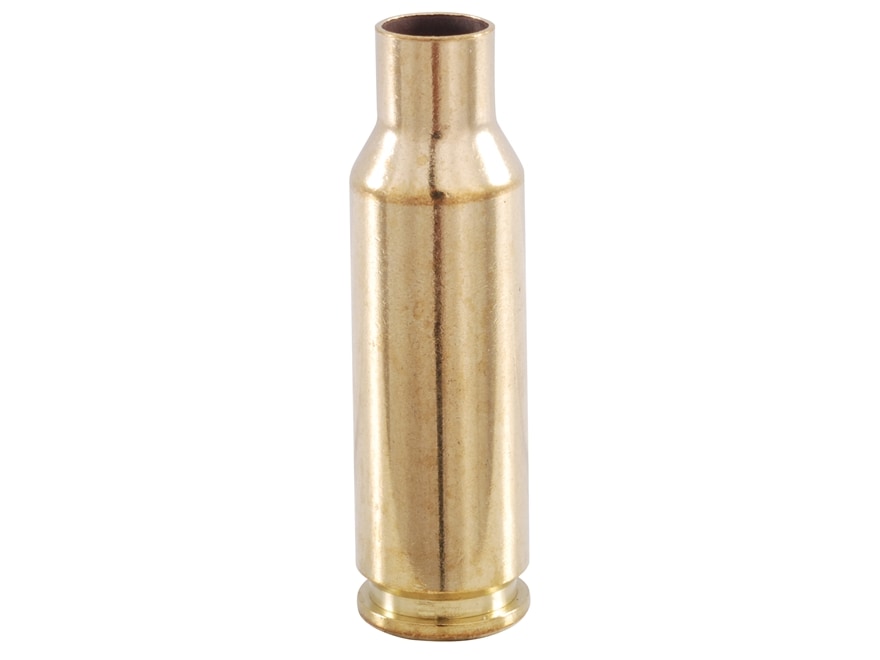
 www.midwayusa.com
www.midwayusa.com
You're welcome!

Starline 6.5 Grendel Brass Bag of 100 (Bulk Packaged)
Starline Brass prides itself on producing the highest quality brass case available. Their brass is comprised of 70% copper and 30% zinc and is...
You're welcome!
Does anyone have any experience with 107 SMK vs 107 TMK.
Which one is easier to load, easier to get to shoot smaller, not picky, etc.
Both are easy. I prefer TMK with AA2520.
is that small or large rifle primer .to me it looks like largeSub $0.50 per piece of new starline brass...

Starline 6.5 Grendel Brass Bag of 100 (Bulk Packaged)
Starline Brass prides itself on producing the highest quality brass case available. Their brass is comprised of 70% copper and 30% zinc and is...www.midwayusa.com
You're welcome!
Says SRP in the description. Is LRP Grendel brass even a thing? I’ve never encountered any.is that small or large rifle primer .to me it looks like large
Its small. Only way Ive ever seen LRP 6.5G is when I made it out of 762x39.is that small or large rifle primer .to me it looks like large
I have some srp grendel brass that's properly headstamped but it's S&B. To my knowledge, starline grendel brass is all SRP.Its small. Only way Ive ever seen LRP 6.5G is when I made it out of 762x39.
However, I am not the seller. I was simply passing on a deal so anyone interested should do their own research.
Starline has always been SRP to my knowledge, and is described as such in the link.is that small or large rifle primer .to me it looks like large
The only LRP Grendel brass was from PPU in the initial lots they did for several years, starting in the late 2000s up through the 2010s. Then they recalled some big lots of ammo, and switched over to SRP.
I have many samples of both from factory ammo. PPU is pretty soft brass, so it’s good for hunting and competition where you don’t care about pick-up.
PPU was lg primers years ago . Don’t know what they are nowIts small. Only way Ive ever seen LRP 6.5G is when I made it out of 762x39.
I didn’t load for accuracy but checked speeds using the Leverlution under the 100gn VTs and was not impressed. Started to get pressure signs at 31.5 grains and fastest I could get was 2530FPS out of a 16” barrel.
LT-30 yielded much better results for me.
LT-30 yielded much better results for me.
You can do better than that. Hornady’s v-match 100 ELD-VT ammo clocks 2516 fps from my 12” rainier arms barreled ar15.I didn’t load for accuracy but checked speeds using the Leverlution under the 100gn VTs and was not impressed. Started to get pressure signs at 31.5 grains and fastest I could get was 2530FPS out of a 16” barrel.
LT-30 yielded much better results for me.
Yea I was expecting much faster than that. Everyone seemed to lead me toward the Leverlution but it wasn’t performing how I thought it would. The LT-30 I was getting 2690 out of a 14.5”.You can do better than that. Hornady’s v-match 100 ELD-VT ammo clocks 2516 fps from my 12” rainier arms barreled ar15.
Any suggestion for a different powder? I was wanting to get the 100s up to 27-2800 fps out of a 14.5” barrel.
I looked upload data on lt-30 pushing 100gr . not understanding how you could get 2690Yea I was expecting much faster than that. Everyone seemed to lead me toward the Leverlution but it wasn’t performing how I thought it would. The LT-30 I was getting 2690 out of a 14.5”.
Any suggestion for a different powder? I was wanting to get the 100s up to 27-2800 fps out of a 14.5” barrel.
Ladder test I did with it.I looked upload data on lt-30 pushing 100gr . not understanding how you could get 2690
Attachments
But will I get any better with that than the LT-30 I already have? i know I asked for suggestions, but would like some evidence to back it up. I don’t want to drop another $50ish on powder that may work. I honestly don’t know why everyone was raving about Leverlution.You can try n133 or n135 with the 100 grain vt.
I have seen guys us H335 but I do not have much experience with it.
I know CFE223 had my 90gr running 2550 in a 12.5"
I know CFE223 had my 90gr running 2550 in a 12.5"
I get 2700 with 29.9gr of N133 w/ 90gr TNT from my 12.5” Rainier bbl. 2940ish from 20” barrels.I have seen guys us H335 but I do not have much experience with it.
I know CFE223 had my 90gr running 2550 in a 12.5"
I run 29.6gr N133 with 90gr Varmageddon and it’s about 40fps slower but extremely low SDs and great groups from two different 20” barrels.
Man 2700 in a 12.5 gas gun?!I get 2700 with 29.9gr of N133 w/ 90gr TNT from my 12.5” Rainier bbl. 2940ish from 20” barrels.
I run 29.6gr N133 with 90gr Varmageddon and it’s about 40fps slower but extremely low SDs and great groups from two different 20” barrels.
I was happy with 2500 but now I wanna push it !
Similar threads
- Replies
- 6
- Views
- 359
- Replies
- 1
- Views
- 141

